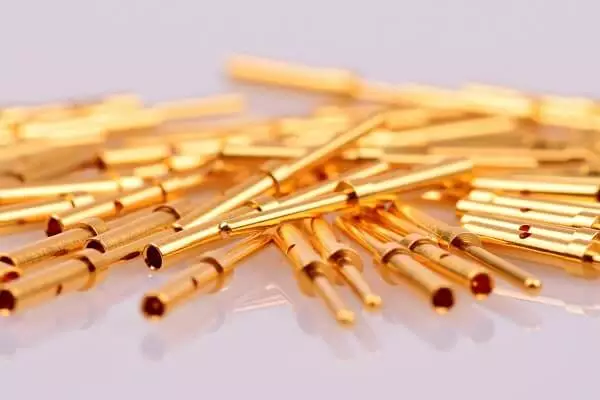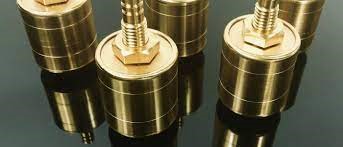Introduction
Gold plating, once reserved for jewelry and high-end electronics, has transcended its traditional boundaries. Today, artisans, designers, and engineers are pushing the boundaries of this ancient craft, experimenting with unconventional materials to create stunning, gilded masterpieces. This article delves into the fascinating world of gold plating on non-metal substrates, uncovering its applications, techniques, and the innovative potential it holds.

The Evolution of Gold Plating
Historical Perspective
Gold plating dates back to ancient civilizations, where it was used to adorn temples, statues, and ceremonial objects. Over millennia, this craft has evolved from a symbol of wealth and status to a versatile tool for enhancing aesthetics and functionality.
Modern Applications
While metal objects continue to be the primary candidates for gold plating, the 21st century has witnessed a surge in experimentation with non-metallic materials. Plastics, ceramics, glass, and even organic materials are now being transformed with a golden touch.
Materials Beyond Metal
Plastics: A Surprising Canvas
Advances in polymer technology have opened up exciting possibilities for gold plating. High-grade plastics, such as ABS and polycarbonate, can now be successfully plated, leading to applications in automotive components, consumer electronics, and fashion accessories.
Ceramics and Glass: Marrying Elegance with Durability
The marriage of gold and ceramics offers a unique blend of opulence and resilience. Porcelain and glassware, once limited to conventional finishes, are now being enriched with gold-plated accents, appealing to a discerning clientele.
Organic Materials: Nature Meets Luxury
In a groundbreaking fusion of nature and opulence, artisans are experimenting with gold plating on organic materials like wood, leather, and plant-based textiles. This innovative approach is redefining the boundaries of luxury craftsmanship.
Techniques and Challenges
Adhesion and Substrate Preparation
Plating on non-metal substrates requires meticulous surface preparation. Techniques like surface activation, priming, and special adhesion promoters are employed to ensure a durable and visually appealing finish.
Specialized Plating Baths and Processes
Innovative plating solutions have been developed to cater to the unique requirements of non-metallic substrates. These baths are formulated to provide excellent adhesion, corrosion resistance, and uniform coverage.
Challenges and Solutions
Non-metal plating presents unique challenges, including porosity, thermal sensitivity, and flexibility. Engineers and artisans have devised creative solutions, such as specialized masking techniques and tailored pretreatment processes, to address these issues.
Applications and Case Studies
Automotive Industry: Redefining Luxury Interiors
Luxury car manufacturers are embracing gold-plated accents in interiors, elevating the driving experience to new levels of opulence. From dashboard trims to gearshifts, the automotive industry is witnessing a golden revolution.
Consumer Electronics: Merging Form and Function
In an era where aesthetics play a pivotal role in consumer choices, gold-plated electronics are making a mark. From smartphones to headphones, manufacturers are incorporating gold accents to create visually striking and premium-feeling products.
Fashion and Accessories: Elevating Personal Style
Gold-plated accessories, once limited to jewelry, are now extending their reach to footwear, eyewear, and even clothing. Designers are using this technique to add a touch of luxury to everyday items.
Future Prospects and Sustainability Considerations

Innovations on the Horizon
As technology advances, so too will the possibilities of gold plating on unconventional materials. Nanotechnology, 3D printing, and advanced surface treatments promise to further expand the applications of this ancient craft.
Sustainability in Non-Metal Plating
With sustainability being a key concern, the industry is actively exploring eco-friendly alternatives. Water-based plating solutions, recycling of precious metals, and the development of biodegradable substrates are some of the avenues being explored.
Conclusion
The exploration of gold plating on non-metal substrates represents a remarkable fusion of tradition and innovation. From plastics to organic materials, the boundaries of this craft are continually expanding. As technology and sustainability considerations evolve, we can expect even more exciting developments in this dynamic field, offering new avenues for creativity and luxury in the modern world. Embracing the potential of gold plating on unconventional materials is not just an aesthetic choice but a testament to the enduring appeal and adaptability of this ancient craft.
